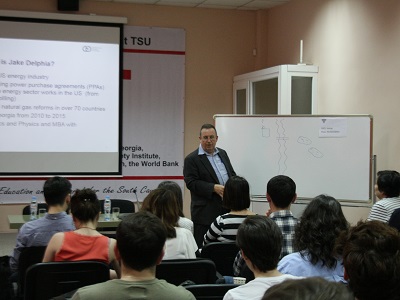- Details
Congestion in electricity transmission systems is a common problem all around the world, Georgia included. Two types of congestion are observed in the power sector; physical and economic. Physical congestion occurs when a transmission system is not adequate to supply an increasing amount of electricity. Economic congestion appears when prices in one region are different from those in another region, while cheaper electricity cannot be sold to the region with high prices. Both types of congestion are problematic for Georgia.
Physical congestion is prevalent in Georgia because electricity is heavily used in the eastern part of the country, while most power plants are in the west (such as large HPPs). Economic congestion occurs because cheap electricity in western Georgia cannot always be delivered to eastern Georgia, where power plants produce more expensive electricity.
- Details
Looking down from the famous cross-path of the Georgian Military Highway, you will notice a beautiful little lake that was not there six years ago. The lake is a small reservoir that supplies power to the 8 MW Aragvi HPP. On May 19, the ISET community and guests from professional circles in energy sector heard the story behind this hydro power plant in a seminar entitled “Small Hydro power – what’s special about it and how to implement it?” delivered by Hanness Posch, a civil engineer and entrepreneur working on hydropower projects in Georgia.
Mr. Posch’s engagement with Georgia started soon after Austrian investors rebuilt the Gudauri Ski resort in 1986. Mr. Posch was invited as an engineer to prepare a hydropower project to ensure a stable power supply for the resort. In the meantime, while preparing the project on the Aragvi river, Gudauri investors sold their shares in the resort and Mr. Posch was left as the sole participant in the project without enough resources to implement it. After finding Georgian partners, a company was registered and long search for the necessary funding started. Years later in 2011, the Austro-Georgian company found the money and commenced construction of their first 8 MW Aragvi HPP project.












